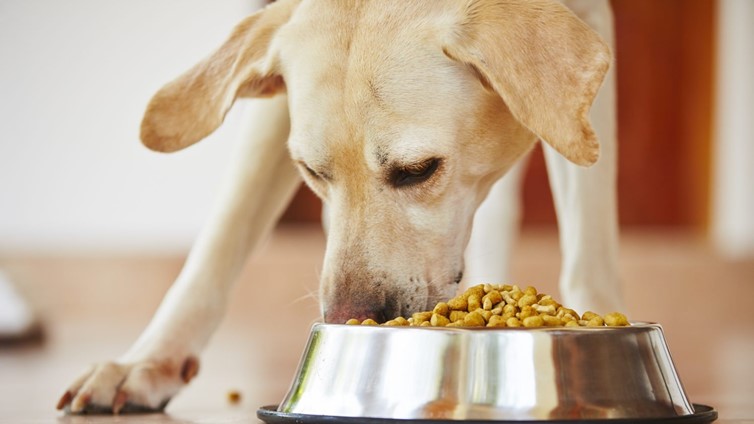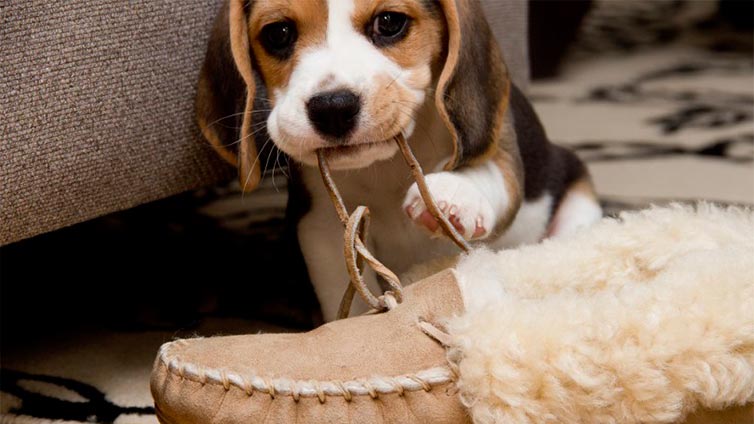It’s not at all unusual that dogs like to be in the center of attention.
However, some like it a little too much and will do whatever it takes to get your attention.
One of the easiest ways of achieving that is by pawing.
Pawing and scratching is your dog’s way of getting attention, asking for something or playing. While it can be a normal way of communicating in some cases, if it gets out of hand your dog might even end up hurting you. Fortunately, this behavior can be improved with training.
Read on and discover how. But first, let’s answer the following question:
Why Do Dogs Paw?
Pawing is basically a way of communicating. And as such, it doesn’t mean only one thing. Your dog might be using its paws to make you notice him or her, in order to apologize or as a way of telling you he needs something.
So, what can the different meanings of pawing be?
- Give me that! Your dog might be pawing at something he wants to get, such as a treat or an object.
- Look at me! As mentioned, this could be a way of getting your attention while your focus is elsewhere. If you give in once and pay attention to your dog, your dog will learn that this is the right way to get your attention.
- Let’s play! Pawing you could mean that he’s friendly and wants to play. However, it’s not an optimal way of inviting people to play as your dog could accidentally hurt someone.
- I want to go out! When dogs paw at the door, it’s usually a sign that the dog wants to open the door and go out.
- You’re in charge! It could also be a submissive gesture, combined together with other gestures of that kind.
- I’m in charge! If the dog puts his paws on another dog, it’s his way of showing control. So, if he does that to you or someone else, he’s trying to be in charge. This should be discouraged as you have to be the one in charge, always.
Should It Be Stopped?
While it can be really cute at times to see your dog stretch out its paw as a way of apologizing, it can be really annoying if it becomes a habit. All dogs paw a bit and you shouldn’t try to eliminate this kind of behavior completely. However, if your dog learns that pawing will get him what he wants and he doesn’t stop until he gets it, it’s time to deal with this behavior.
Besides being a bad way of getting attention, pawing can even be dangerous in some situations. Depending on your dog’s size and its paw, this habit can be both really annoying and dangerous. Namely, a dog with a big claw can rip and tear your clothes or even worse – your skin. If you have a baby this could be extremely dangerous.
So, the answer is – yes, if it turns into a habit, pawing should be stopped. But how do you do that?
Check out the video below before you start reading on how to stop this kind of behavior!
How Do I Stop My Dog From Pawing?
Fortunately, like almost all behaviors, pawing can be reduced with some basic training methods. And just like with any other training, it will take some time which is why you have to be persistent and patient.
But before you start, you have to be sure of the reasons for pawing. As mentioned, occasional pawing is not necessarily bad, if that’s your dog’s way of apologizing. So, you have to be sure of the reasons before you start eliminating this behavior. Is your dog trying to get your attention or is it simply his way of saying “sorry”?
If you establish that it’s attention-seeking behavior you’re dealing with, check out these tips on how to stop pawing!
1. Replace This Behavior
If you want to eliminate this kind of attention-seeking behavior, you have to find a desirable way of doing that. So, when your dog is pawing at you, you can ask your dog to do some of the commands he or she already know. For instance, ask your dog to sit and give a treat before he continues to paw. After that, ask your dog to do more tricks and commands and reward afterwards.
The goal is to replace pawing with appropriate behavior that your dog can use when he or she needs something or wants to get your attention. So, instead of pawing, your dog can learn to sit and look at you when he needs something, like going out.
2. Don’t Pay Attention
If you, or someone else, give attention to your dog for pawing at some point, he or she will learn that this is the right way of getting it. As a result, your dog will resort to pawing when he wants to be in the spotlight. In order to change this perception, you have to do the exact opposite – ignore and pay no attention whatsoever.
So, when your dog is pawing for attention, freeze completely and avoid eye contact. You can even walk away for some time. When your dog has calmed down and has stopped with the unwanted behavior, pay attention to him again. Even though the behavior will become even worse in the beginning, if you and your family members are persistent, your dog will eventually understand that this is not the way to get attention.
3. Set Up Playing Rules
Dogs tend to use their paws when playing with another dog, which is usually completely fine. However, when playing with you or another person, this is unacceptable behavior and can even hurt. This is why you have to show what rules are appropriate when playing with you.
You have to show that all play ends if the dog is rough with his paws. So, when your dog starts pawing during play, stop playing immediately and ignore your dog. You can also remove the toys, if using any, to show that playtime shouldn’t include pawing. Continue with the playing when the pawing ceases and stop again if it begins. With time, you will get rid of this behavior.
4. Increase Exercise
In many cases, negative behavior is a consequence of boredom or too much energy. All breeds need both physical and mental exercise, but some need more than others. So, if your dog is on the active side you have to provide enough activities, not only in order to reduce pawing but other unwanted behavior as well.
While we’re at the topic of pawing, there’s another interesting question we often get we wanted to answer…
Why Is My Dog Pawing At The Food Bowl?

Even though pawing at the food bowl isn’t the same as pawing for attention, it’s still pawing of some kind. If your dog is doing that, you’re definitely not the only one! So, why then?
In order to explain this, we have to go way back. Namely, this is one of those behaviors your dog inherited from his ancestors. And as you know, its ancestors are wolves. By pawing at the food, your dog is “verifying” the food, that used to be the kill back in the days. When he’s doing that he’s actually making sure that the food is safe to eat and that it won’t “attack back”.
No matter how strange this sounds and even though the dog didn’t hunt for that food (where does one hunt kibble?!), your dog is doing this subconsciously to make sure the food is “good and dead”.
If you want to stop this behavior, you can try putting the food bowl someplace calm in the house. The kitchen can be very busy, with a lot of sounds and action, which is why dogs tend to check their food more at places they perceive as “risky”. So, try moving the bowl to a quiet place that your dog doesn’t think of as too risky. Cleaning up food around the bowl isn’t something you want to do constantly, we get it!
For more info on this interesting matter, check out the video below!
Conclusion
Dog pawing is something every dog owner deals with, one way or the other. Pawing can mean many things – it can be a way of apologizing or showing domination. However, it’s most often a way of asking for attention and as such it should be stopped.
Before you start though, be sure of why your dog is pawing at you. If it’s simply a way of saying sorry, that isn’t hurting anyone, there’s no need to stop this behavior. However, if your dog has learned that this is the way to get attention, you should work with this as it’s not only annoying, but possibly dangerous as well.
Fortunately, you can train away this behavior. You should replace this behavior with an appropriate command, for instance “sit”. You should also ignore your dog completely and stop playing if he’s using his paws in order to show that only good behavior will get your attention.
Most importantly – be persistent, especially in the beginning. If you are, you will be able to eliminate this kind of behavior soon!





















